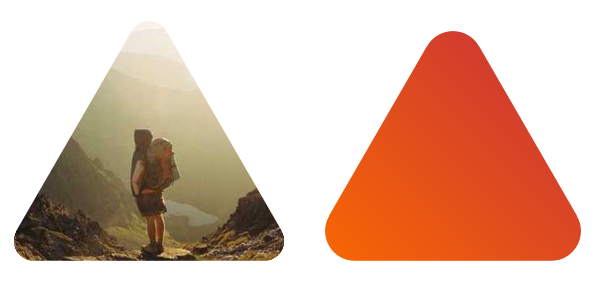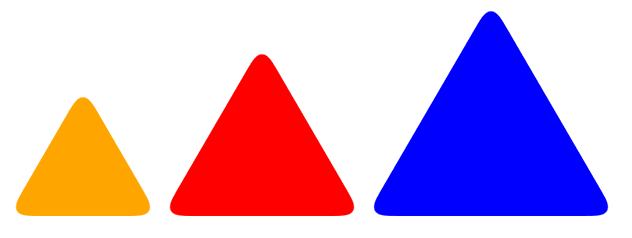Played around with Murray Smiths most upvoted version. Wrote it as a Stylus mixin and fixed some margin issues and added a direction option. The mixin also scales the triangle to somewhat pixelperfect size. Not tested very well. Use with care
http://codepen.io/perlundgren/pen/VYGdwX
triangle(direction = up, color = #333, size = 32px)
position: relative
background-color: color
width: 2*(round(size/3.25))
height: 2*(round(size/3.25))
border-top-right-radius: 30%
&:before,
&:after
content: ''
position: absolute
background-color: inherit
width: 2*(round(size/3.25))
height: 2*(round(size/3.25))
border-top-right-radius: 30%
if direction is up
transform: rotate(-60deg) skewX(-30deg) scale(1,.866)
margin: (@width/4) (@width/2.5) (@width/1.2) (@width/2.5)
if direction is down
transform: rotate(-120deg) skewX(-30deg) scale(1,.866)
margin: 0 (@width/1.5) (@width/1.5) (@width/6)
if direction is left
transform: rotate(-30deg) skewX(-30deg) scale(1,.866)
margin: (@width/5) 0 (@width) (@width/1.4)
if direction is right
transform: rotate(-90deg) skewX(-30deg) scale(1,.866)
margin: (@width/5) (@width/1.4) (@width) 0
&:before
transform: rotate(-135deg) skewX(-45deg) scale(1.414,.707) translate(0,-50%)
&:after
transform: rotate(135deg) skewY(-45deg) scale(.707,1.414) translate(50%)
and then just add the mixin to your class
.triangle
&.up
triangle()
&.down
triangle(down)
&.left
triangle(left)
&.right
triangle(right)








